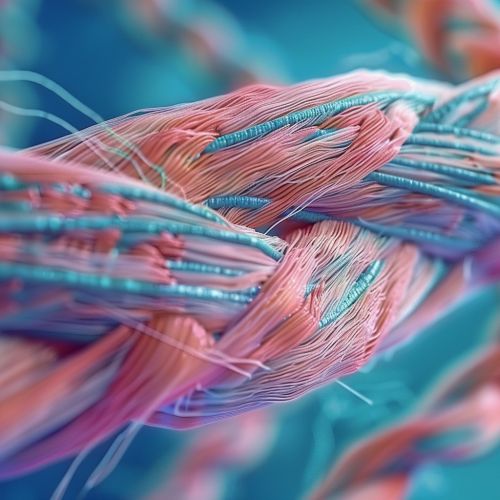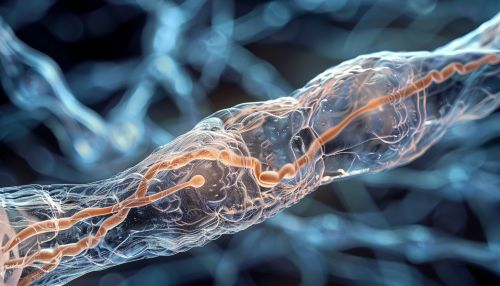Muscle contraction
Overview
Muscle contraction is a complex process that involves the interaction of various proteins within muscle cells. This process is responsible for the movement and maintenance of posture in the body. The primary proteins involved in muscle contraction are actin and myosin, which interact to create a sliding filament model of muscle contraction.


Types of Muscle Tissue
There are three types of muscle tissue in the body: skeletal, cardiac, and smooth muscle. Each type has a unique structure and function, but all three types contract to produce movement.
Skeletal Muscle
Skeletal muscle is the type of muscle that we can consciously control. It is responsible for all the locomotion and mechanical work in the body. Skeletal muscle contracts in response to signals from the nervous system, allowing us to move our limbs, maintain posture, and perform physical tasks.
Cardiac Muscle
Cardiac muscle is found only in the heart and contracts to pump blood throughout the body. Unlike skeletal muscle, cardiac muscle contraction is not under conscious control but is regulated by the autonomic nervous system.
Smooth Muscle
Smooth muscle is found in the walls of organs and structures such as the esophagus, stomach, intestines, bronchi, uterus, urethra, blood vessels, and the arrector pili in the skin (which are responsible for goosebumps). Smooth muscle contraction is generally slow, and can be either involuntary or modulated by the autonomic nervous system.
Mechanism of Muscle Contraction
Muscle contraction is a result of a process known as the sliding filament theory. This theory describes how muscle fibers shorten as the thick and thin filaments within the sarcomeres slide past one another.
Excitation-Contraction Coupling
The process of muscle contraction begins with the excitation of a motor neuron, which releases acetylcholine at the neuromuscular junction. This triggers an action potential that spreads across the muscle fiber's sarcolemma and into its T-tubules, leading to the release of calcium ions from the sarcoplasmic reticulum.
Cross-Bridge Cycle
The increase in calcium ion concentration triggers the binding of calcium to troponin, which shifts tropomyosin off the active sites on actin, allowing myosin heads to attach and form cross-bridges. This initiates the cross-bridge cycle, where myosin heads bind to actin, undergo a power stroke that moves the actin filament, detach, and reattach in a new position to repeat the cycle.
Energy Supply for Muscle Contraction
Muscle contraction requires energy, which is supplied by adenosine triphosphate (ATP). ATP is produced by cellular respiration, which can occur aerobically or anaerobically.
Aerobic Respiration
Aerobic respiration occurs in the presence of oxygen and includes glycolysis, the Krebs cycle, and the electron transport chain. This process produces the most ATP and is the primary energy source during rest and light to moderate exercise.
Anaerobic Respiration
Anaerobic respiration, or glycolysis, occurs without oxygen and produces much less ATP. However, it can provide energy more quickly than aerobic respiration, making it the primary energy source during intense exercise.
Muscle Fatigue and Recovery
Muscle fatigue occurs when a muscle can no longer contract despite continued stimulation. This is typically due to a buildup of lactic acid from anaerobic respiration, depletion of energy stores, and other factors. Recovery involves the removal of lactic acid and replenishment of energy stores, which can take several hours to days depending on the intensity and duration of exercise.
